- Chojagahara Archaeological Museum
- Fossa Magna Museum

Road & Geosite Conditions
Fully Accessible

- Number
- Area
- 1. Ichiburi Geosite
- 2. Oyashirazu Geosite
- 3. Omi Coast Geosite
- 4. Omigawa Jade Gorge Geosite
- 5. Imai Geosite
- 6. Itoigawa-Shizuoka Tectonic Line and Salt Trail(North) Geosite
- 7. Maikomidaira Geosite
- 8. Hashidate Gold Mine Geosite
- 9. Kotakigawa Jade Gorge Geosite
- 10. Tsugami Shindo Geosite
- 11. Himekawa Gorge Via Oito Line Geosite
- 12. Itoigawa-Shizuoka Tectonic Line and Salt Trail(South) Geosite
- 13. Himekawa Gorge Geosite
- 14. Renge Geosite
- 15. Itoigawa Coast Geosite
- 16. Miyama Park and Museums Geosite
- 17. Tsukimizunoike Geosite
- 18. Umidani Gorge Geosite
- 19. Amakazariyama Geosite
- 20. Yakeyama Geosite
- 21. Benten-iwa Geosite
- 22. Shindosan Geosite
- 23. Gongendake Geosite
- 24. Tsutsuishi Hamatokuai Geosite
- Jade
- 1. Ichiburi Geosite
- 2. Oyashirazu Geosite
- 3. Omi Coast Geosite
- 4. Omigawa Jade Gorge Geosite
- 9. Kotakigawa Jade Gorge Geosite
- 15. Itoigawa Coast Geosite
- 16. Miyama Park and Museums Geosite
- Fossa Magna
- 5. Imai Geosite
- Itoigawa-Shizuoka Tectonic Line and Salt Trail(North) Geosite
- 11. Himekawa Gorge Via Oito Line Geosite
- 12. Itoigawa-Shizuoka Tectonic Line and Salt Trail(South) Geosite
- 13. Himekawa Gorge Geosite
- 17. Tsukimizunoike Geosite
- 21. Benten-iwa Geosite
- 22. Shindosan Geosite
- 24. Tsutsuishi Hamatokuai Geosite
- Mountainous areas
- 7. Maikomidaira Geosite
- 8. Hashidate Gold Mine Geosite
- 10. Tsugami Shindo
- 14. Renge Geosite
- 18. Umidani Gorge Geosite
- 19. Amakazariyama Geosite
- 20. Yakeyama Geosite
- 23. Gongendake Geosite

Atop a terrace carved by the Himekawa River lies Miyama Park. This large park features museums like the Fossa Magna Museum and Chojagahara Archeological Museum, the Chojagahara Archeological Site (A Nationally Designated Historical Site), sports and recreation facilities, and a campground.
Fossa Magna museum hosts a number of exhibits about the formation of the land around us and various interesting minerals from Itoigawa and around the world, as well as information about Itoigawa Geopark. At Chojagahara Archeological Museum, jade and other artifacts unearthed from the nearby archeological site are on exhibit. Any trip to Itoigawa Geopark should start here with these museums, where you can learn more about all 24 of our geosites.
At Chojagahara Archeological Site, a Jomon period village has been partially restored with 5 dwellings and a natural spring that supplied the area with fresh water. Near this village is also a workshop where you can learn firsthand about Jomon period life by making magatama and earthenware pottery.
 Miyama Park and Poetic Monument of Gyofu Soma
Miyama Park and Poetic Monument of Gyofu Soma

Miyama Park is located on a wide river terrace formed by the Himekawa. The park houses a large number of recreation and leisure facilities including a public garden which is famous for its cherry blossoms in spring.
On the western edge of the park is a stone monument on which a poem is carved. This poem was written by Gyofu Soma, a famous poet and writer who was born in Itoigawa. It reads:
Tairiku wo shizuka ni shiroki kumo ha yuku
Shizuka ni ware mo iku beku arikeri
White clouds move peacefully onto the shore
So too have I moved peacefully through life
This poem expresses Soma's thoughts on his way of life.
 Fossa Magna Museum
Fossa Magna Museum

The Fossa Magna Museum is a science museum which features a number of geology themed exhibits about the Fossa Magna, jade, and the formation of the Earth. It also houses a massive collection of mineral and fossil specimens from Itoigawa and around the world.
Acting as the "Information Centre" of the Geopark, this museum is the perfect place to start your visit. Learn about the basics of Itoigawa Geopark and its various geosites here before you begin your adventure!
Next to the museum is "Fossil Valley" here visitors can try their hand at excavating for fossils. Museum curators are on hand to verify and identify fossils, which you can take home as a souvenir!
 Chojagahara Archeological Museum and Chojagahara Archeological Site
Chojagahara Archeological Museum and Chojagahara Archeological Site
The Chojagahara Archeological Site is the location where the world's oldest jadeite-working culture flourished thousands of years ago. Here, Japan's indigenous Jomon people crafted jade beads and tools which were distributed through trade channels across the Japanese islands. At the site, a number of Jomon Period dwellings have been reconstructed and can be viewed freely.
Artifacts excavated from the site, including a great number of jade beads in various degrees of completion, are on display at the adjoining museum. There are also experience workshops for making magatama beads or Jomon pottery. (advance reservation required)
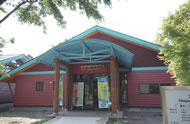
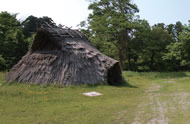
 Observation Tower
Observation Tower
In the western half of the park is a 17 meter tall water tower. Atop this tower is an observation deck which commands a view of the Himekawa River Valley below, the Kubiki Mountains to the southeast, the Northern Alps to the distant southwest, and downtown Itoigawa, the Sea of Japan, and Himekawa Port to the north. On a clear day, you can see across the sea as far as Noto Peninsula.
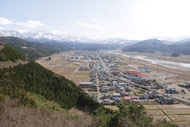
Dr. Heinrich Edmund Naumann
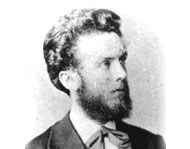
Called the father of Japanese Geology, Dr. Naumann was a German professor of geology who conducted extensive geological surveys of the Japanese islands. He was the first to discover the massive geological rift which separates the islands between east and west; He named this rift the Fossa Magna.
An exhibit in the museum houses a number of Dr. Naumann's works and belongings, kindly donated by his family.
The Sea of Japan Classic Car Review
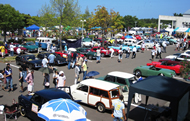
Every September, the Fossa Magna Museum hosts the Sea of Japan Classic Car Review. Over 200 classic cars visit each year from across the country, giving the owners a chance to show off their prized cars and meet with other classic car owners. The event is marked with a number of special exhibitions, including a special parade of classic cars through downtown Itoigawa.
Route to Miyama Park and Museums Geosite
Destination:


